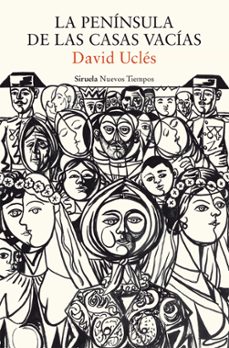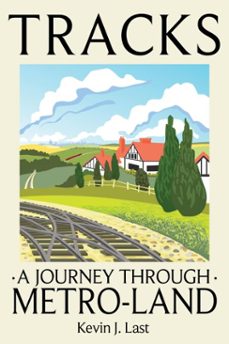Imprescindibles
Más vendidos Libros más leídos eBooks más leídos Todos los libros Todos los libros Autores destacados Series y sagas
Recomendados Libros recomendados Autores destacados Libros que inspiran Vidas con historia LGTBIQ+ English books
Ficción
Literatura Contemporánea Estudios literarios Clásicos Cuentos Poesía Teatro Libros de bolsillo Sagas literarias
Géneros literarios Novela romántica y erótica Novela negra Novela histórica Narrativa fantástica Novela de ciencia ficción Novela de terror Narrativa de humor Narrativa de viajes
No Ficción
Ciencias y tecnología Biología Ciencias Ciencias naturales Divulgación científica Informática Ingeniería Matemáticas Medicina Salud y dietas Formación Idiomas Estilo de vida Libros de Cocina Guías de viaje Narrativa de viajes Deportes Libros de Juegos Manualidades
Humanidades Autoayuda y espiritualidad Ciencias humanas Derecho Economía y Empresa Psicología y Pedagogía Filosofía Sociología Filología Biblioteconomía Estudios filológicos Estudios lingüísticos Estudios literarios Historia y crítica de la Literatura
Infantil
Juvenil
#Jóvenes lectores Narrativa juvenil Clásicos adaptados Libros Wattpad Libros Booktok Libros de influencers Libros de Youtubers Libros Spicy Juveniles Libros LGTBIQ+ Temas sociales Libros ciencia ficción Libros de acción y aventura Cómic y Manga Juvenil Cómic Juvenil Manga Shonen Manga Shojo Autores destacados Jennifer L. Armentrout Eloy Moreno Nerea Llanes Hannah Nicole Maehrer
Libros de fantasía Cozy Fantasy Dark academia Hadas y Fae Romantasy Royal Fantasy Urban Fantasy Vampiros y hombres lobo Otros Misterio y terror Cozy mistery Policiaca Spooky Terror Thriller y suspense Otros
Libros románticos y de amor Dark Romance Clean Romance Cowboy Romance Mafia y amor Romance dramatico Romance dramatico Romcom Sport Romance Otros Clichés Enemies to Lovers Friends to Lovers Hermanastros Slow Burn Fake Dating Triángulo amoroso
Cómic y Manga
Novela gráfica Novela gráfica americana Novela gráfica europea Novela gráfica de otros países Personajes, series y sagas Series y sagas Star Wars Superhéroes Cómics DC Cómics Marvel Cómics otros superhéroes Cómics Valiant
eBooks
Literatura Contemporánea Narrativa fantástica Novela de ciencia ficción Novela de terror Novela histórica Novela negra Novela romántica y erótica Juvenil Más de 13 años Más de 15 años Infantil eBooks infantiles
Humanidades Autoayuda y espiritualidad Ciencias humanas Economía y Empresa Psicología y Pedagogía Filosofía Historia Historia de España Historia Universal Arte Cine Música Historia del arte
Ciencia y tecnología Ciencias naturales Divulgación científica Medicina Salud y dietas Filología Estudios lingüísticos Estudios literarios Historia y crítica de la Literatura Estilo de vida Cocina Guías de viaje Ocio y deportes
Preventa de eBooks de Arquitectura
Filtros
Del 1 al 4 de 4
Hatje Cantz Verlag GmbH 9783775761871
Beyond ready-made solutions design as a practice of critical questioning How can design education foster hope in times of crisis? Authored by Anab Jain, Nikolas Heep, and Stefan Zinell from the Department of Design Investigations at the University of Applied Arts Vienna, this reader introduces a groundbreaking approach to design pedagogy. At its core are speculative practices, world-building, material engagement, and storytelling, equipping students and practitioners to address urgent questions of our time from the climate crisis to technological acceleration. Rather than offering solutions, the book cultivates the essential ability to design questions. With contributions from internationally renowned authors such as Paola Antonelli, Fiona Raby, Vanessa de Oliveira Andreotti, Zoy Anastassakis, Nana Biamah-Ofosu, Lilli Hollein, and Rory Hyde, the volume opens up new perspectives on the role of design in a world in transformation. Highlights of the book Innovative reader from the Department of Design Investigations, University of Applied Arts Vienna Focus on speculative design, world-building, and storytelling A new approach: designing questions instead of predefined answers Interdisciplinary reflections on climate, technology, and society International contributions from leading voices in design, art, and theory An essential publication for students, educators, and researchers in design, as well as for all who seek new methods to respond to global challenges with creativity and hope.Led by award-winning designer and professor Anab Jain, Design Investigations at the University of Applied Arts Vienna fosters speculative, ecological and critical design education, supported by colleagues Nikolas Heep and Stefan Zinells interdisciplinary expertise.
Ver más
eBook
Hatje Cantz Verlag GmbH 9783775761864
Beyond ready-made solutions design as a practice of critical questioning How can design education foster hope in times of crisis? Authored by Anab Jain, Nikolas Heep, and Stefan Zinell from the Department of Design Investigations at the University of Applied Arts Vienna, this reader introduces a groundbreaking approach to design pedagogy. At its core are speculative practices, world-building, material engagement, and storytelling, equipping students and practitioners to address urgent questions of our time from the climate crisis to technological acceleration. Rather than offering solutions, the book cultivates the essential ability to design questions. With contributions from internationally renowned authors such as Paola Antonelli, Fiona Raby, Vanessa de Oliveira Andreotti, Zoy Anastassakis, Nana Biamah-Ofosu, Lilli Hollein, and Rory Hyde, the volume opens up new perspectives on the role of design in a world in transformation. Highlights of the book Innovative reader from the Department of Design Investigations, University of Applied Arts Vienna Focus on speculative design, world-building, and storytelling A new approach: designing questions instead of predefined answers Interdisciplinary reflections on climate, technology, and society International contributions from leading voices in design, art, and theory An essential publication for students, educators, and researchers in design, as well as for all who seek new methods to respond to global challenges with creativity and hope.Led by award-winning designer and professor Anab Jain, Design Investigations at the University of Applied Arts Vienna fosters speculative, ecological and critical design education, supported by colleagues Nikolas Heep and Stefan Zinells interdisciplinary expertise.
Ver más
eBook
LAST, KEVIN J.
Unicorn 9781917458405
Tracks: A Journey Through Metroland tells the story of Metroland and the development of suburbia that grew alongside the Metropolitan Railway. Originally the brainchild of eminent Victorians, the Metropolitan grew to become the queen of underground lines, eventually expanding to a point some fifty miles outside London. Author Kevin J. Last describes how the concept of Metroland was an aspiration for several levels of society, promising a better lifestyle well away from the deprivations of wartime. The idea that the working man could live comfortably outside the smoke in individually designed houses would mean that he could also thrive at work, largely due to the regular service offered by the new railway. This was quite exceptional in that, while nominally an underground line, most of the Mets route was above ground and, in length, went far beyond other similar lines, far out into the Buckinghamshire countryside. Not marked on any map, Metroland is as much a concept of the mind as a real place.
Ver más
eBook
DEBATE 9791387600310
El manifiesto de uno de los urbanistas más influyentes del mundo para humanizar y hacer más habitables las ciudades.El poder de la proximidad invita a repensar la vida urbana desde una mirada más humana y transformadora. Carlos Moreno propone una autentica revolucion urbanistica: habitar la ciudad -no solo alojarse en ella- redescubriendo el valor de la cercania. Defiende una ciudad compacta, accesible y vivible, donde la proximidad mejore la calidad de vida y fortaleczca los lazos sociales, culturales y ambientales.--------------La coleccion Endebate es el hogar de aquellos textos breves que presentan una opinion, defienden una actitud o cuentan una historia, pero son mas un aperitivo que un banquete, estimulan la conversacion mas que saciarla e inician un festin (que no clausuran). Como los mejores bocados, entran por los ojos y dejan un largo poso en el paladar.La critica ha dicho: En un mundo donde las ciudades crecen sin pausa y el tiempo de las personas se disuelve entre desplazamientos y distancias, Moreno propone una revolucion silenciosa pero profunda: reorganizar la vida urbana en torno a la proximidad, la equidad y el bienestar cotidiano. Union de Ciudades Capitales Iberoamericanas
Ver más
eBook
Del 1 al 4 de 4






























